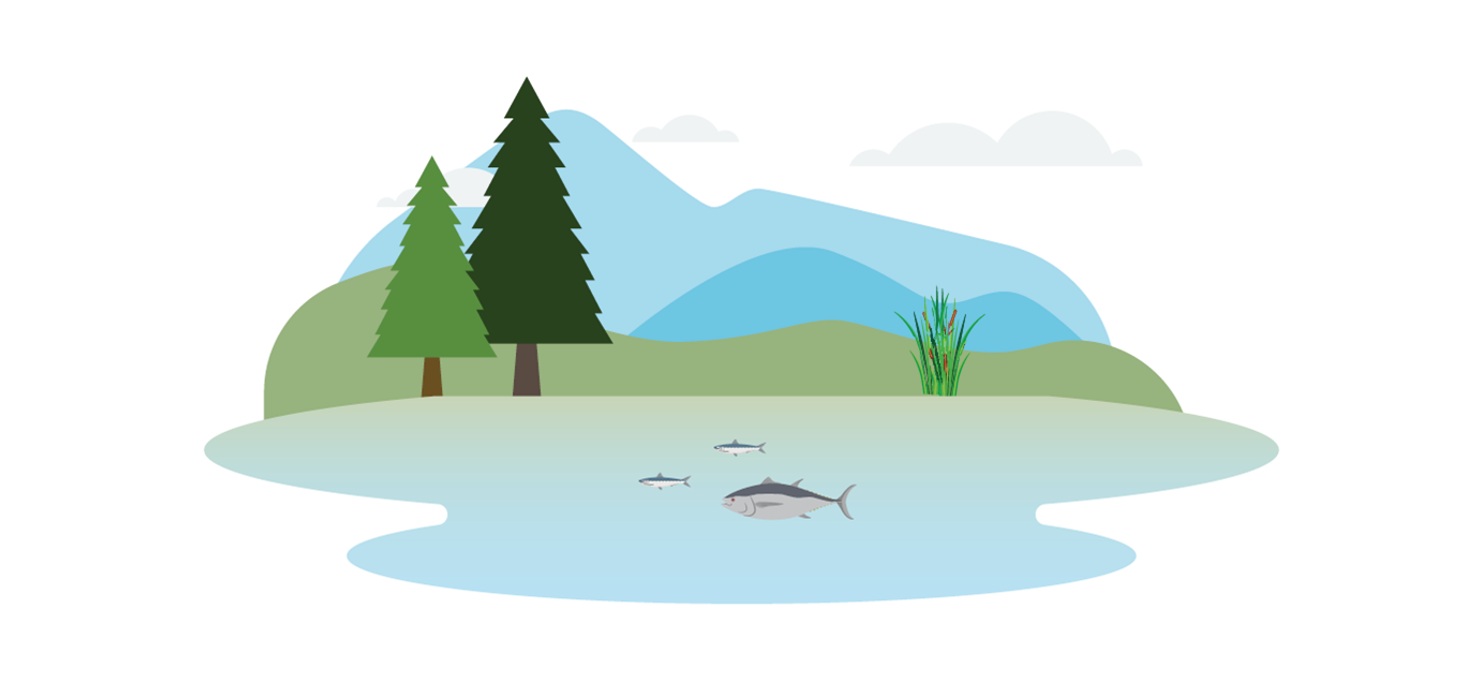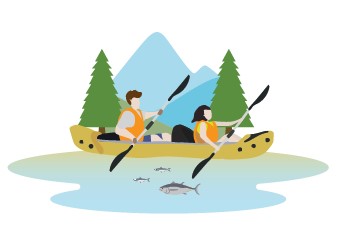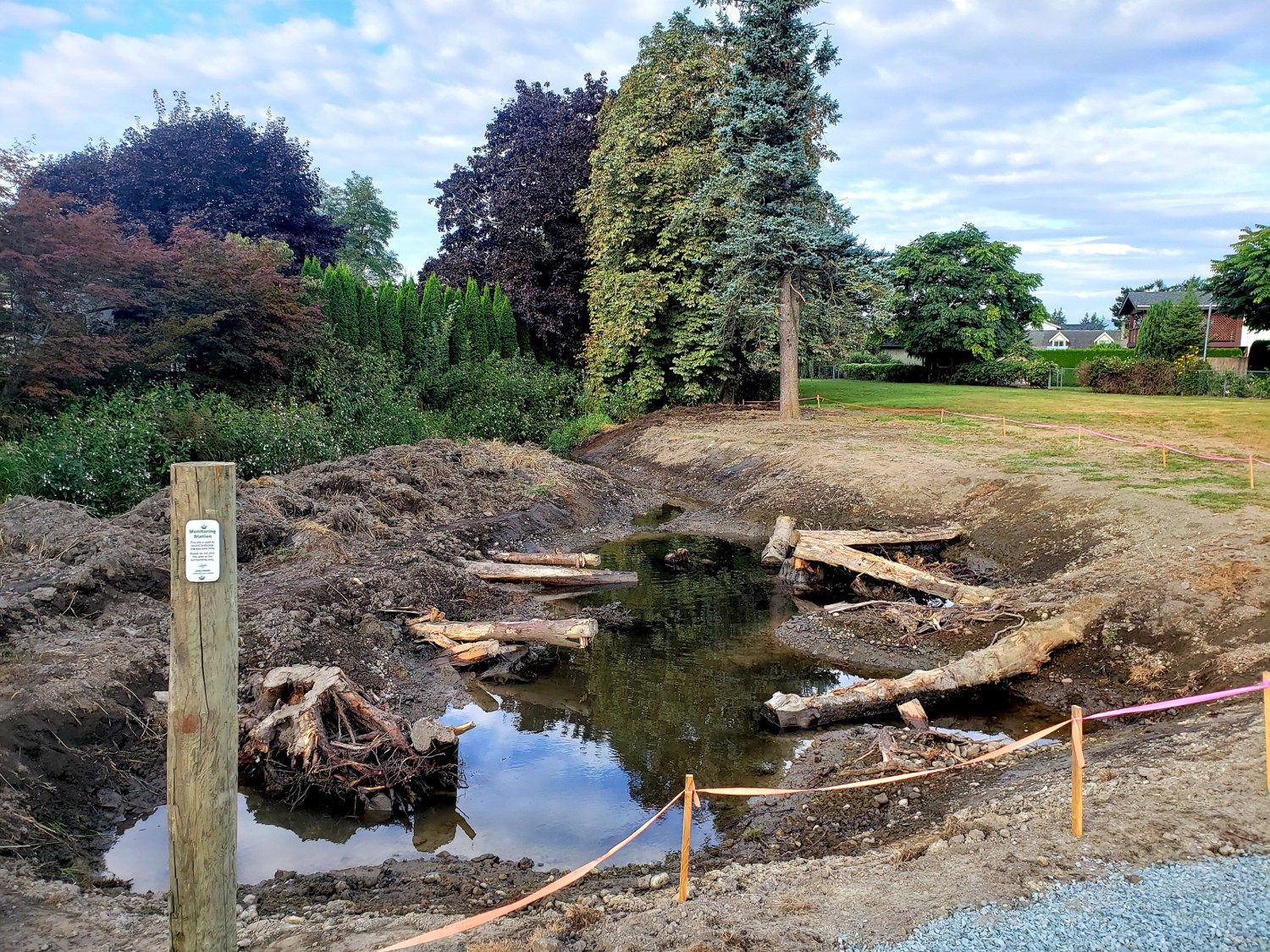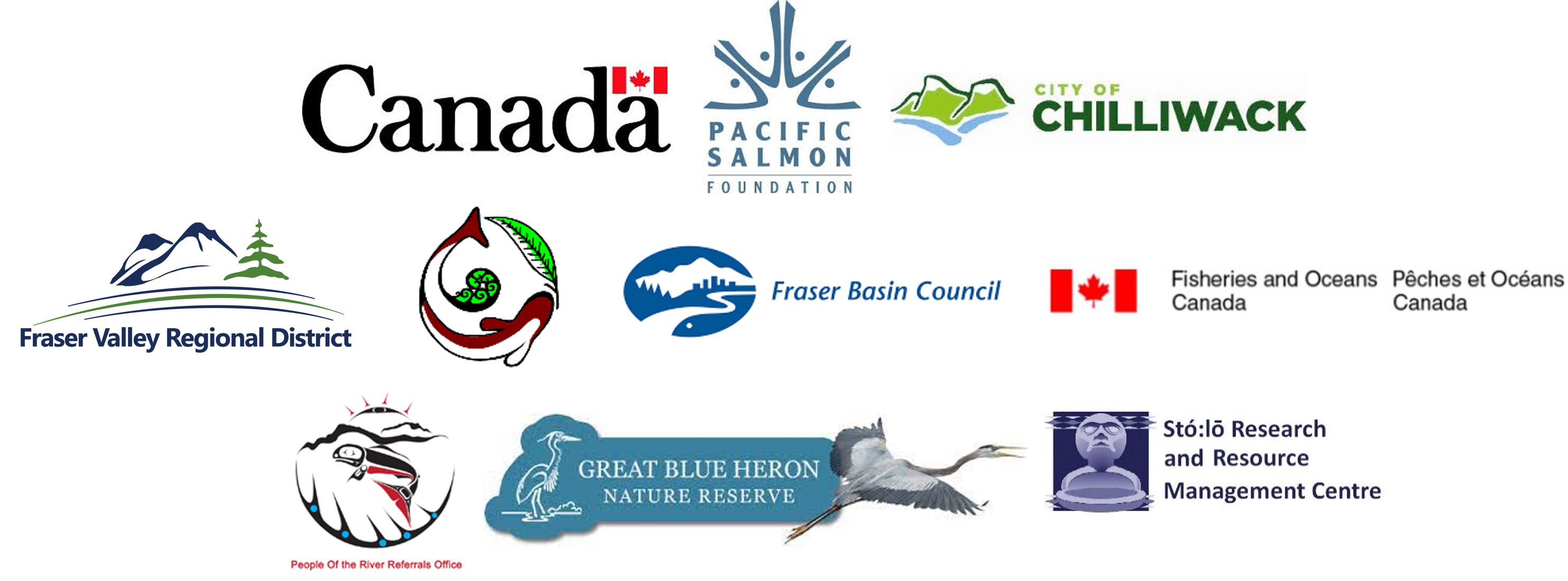

This project will employ strategies to address threats to species at risk (SAR) and their associated habitats through conservation, watershed planning and the implementation of restoration activities within the municipal boundaries of Chilliwack, British Columbia.
The population of Chilliwack is projected to double by the year 2041; therefore, the development of both immediate and future management and restoration initiatives is critical to ensure ongoing ecological function. Waterways within the targeted area have been subject to impacts by numerous anthropogenic factors which threaten SAR such as the Coastrange (Pygmy) Sculpin, Salish Sucker and Sockeye, Chinook and Coho Salmon. Both the quality and quantity of SAR habitat in this area has been reduced due to infrastructure development, agricultural and forestry activities, introduction of invasive plant species and the increasing impacts of climate change. Impacts include reduced access to off-channel habitat (vital to support various life-stage requirements), declining aquatic water quality (low dissolved oxygen levels, high water temperatures, degradation to habitat complexity and structures) and disruptions to natural systems (culverts, pump stations, etc.).
Key sub-set areas within the Chilliwack area will be identified, assessed and prioritized for restoration and habitat improvement activities. The goal is to ensure the long-term health and biodiversity of these waterways to meaningfully contribute to the recovery of local SAR as well as support diverse aquatic species populations in general.
Through the collaborative efforts of a steering committee, formed through this project, strategic partners and stakeholders will develop a multi-variant “road map” (matrix) which identifies opportunities to complete SAR restoration activities and will form plans for future restoration and habitat improvement efforts. Using existing target SAR information and data, and a variety of other matrix considerations, actionable steps will be identified which address key threats/impacts and will fit within the allotted funding envelope. The matrix will continue to be utilized to prioritize projects within the area beyond the timeline of this project.
The focus of this integrated plan is to improve aquatic habitat for target species at risk (i.e. Salish sucker, pygmy sculpin, Cultus Lake Sockeye, and Coho Salmon) resulting in both direct and indirect benefits to species and habitat recovery and enhanced overall biodiversity. Additionally, this plan will incorporate societal and cultural values into the design so that information is shared about potential restoration opportunities and multi-discipline landscape level values are supported.
1. Cultus Lake Summit, Primer, Eutrophication and Report

photo credit: Fraser Basin Council
Summary of Activities
Cultus Lake is undergoing cultural eutrophication which heavily impacts the endangered Cultus Lake Sockeye and Coastal pygmy sculpin populations.
Cultural eutrophication is the accumulation of nutrients such as phosphorous and nitrogen into water from human activities. Too many aquatic nutrients lead to an increase in plant density and algal blooms which eventually consume too much oxygen for native aquatic species to survive.
For more information on the cultural eutrophication of Cultus Lake, its effects on lake ecosystem services and species at risk, and the Cultus Lake Summit primer and summary click the links below:
2. Peach Creek, Hoogie Wetland & Wilson Park

photo credit: FVWC
description: Side channel of Stewart Creek created at Wilson Park in Yarrow, BC. This photo shows Wilson Park after construction and before riparian planting.

photo credit: FVWC
description: Hooge Wetland constructed as a side channel of Peach Creek and located upstream of the Hooge Road parking lot of the Vedder River Rotary Trail. This photo was taken after construction was completed and before any riparian planting was done.
Summary of Activities
For more information on these restoration projects click on the links below:
Read the 2019-2020 Summary Report below:
Read the 2020-2021 Summary Report below:
This project aims to increase the presence and resilience of wild salmon and biodiversity throughout Chilliwack. The designs support conceptual opportunities that contribute towards a greener future by contributing to climate action strategies.
Set within the City of Chilliwack (COC), we acknowledge the aboriginal heritage of the S’όlh Téméxw (Stó:lô) People of the River: the Ts’elxwéyeqw and Pilalt tribes and their historic villages including Cheam, Kwaw kwaw Apilt, and Skwah (Pilalt); and Aitchelitz, Skowkale, Shxwhà:y, Soowahlie, Squiala, Tzeachten, and Yakweakwioose (Ts’elxwéyeqw). We recognize the rich cultural and ecological values of this landscape and their importance towards building natural and community resilience and togetherness for future.
We are grateful for the financial contribution made by the City of Chilliwack and Canada’s Nature Fund for Aquatic Species at Risk. We thank our community partners including the Fraser Valley Regional District, Fisheries and Oceans Canada, University of the Fraser Valley, our directors, volunteers and members for your support.


City of Chilliwack Aquatic and Riparian Opportunities 2020
Click here to read the report.

This is a block of text. Double-click this text to edit it.